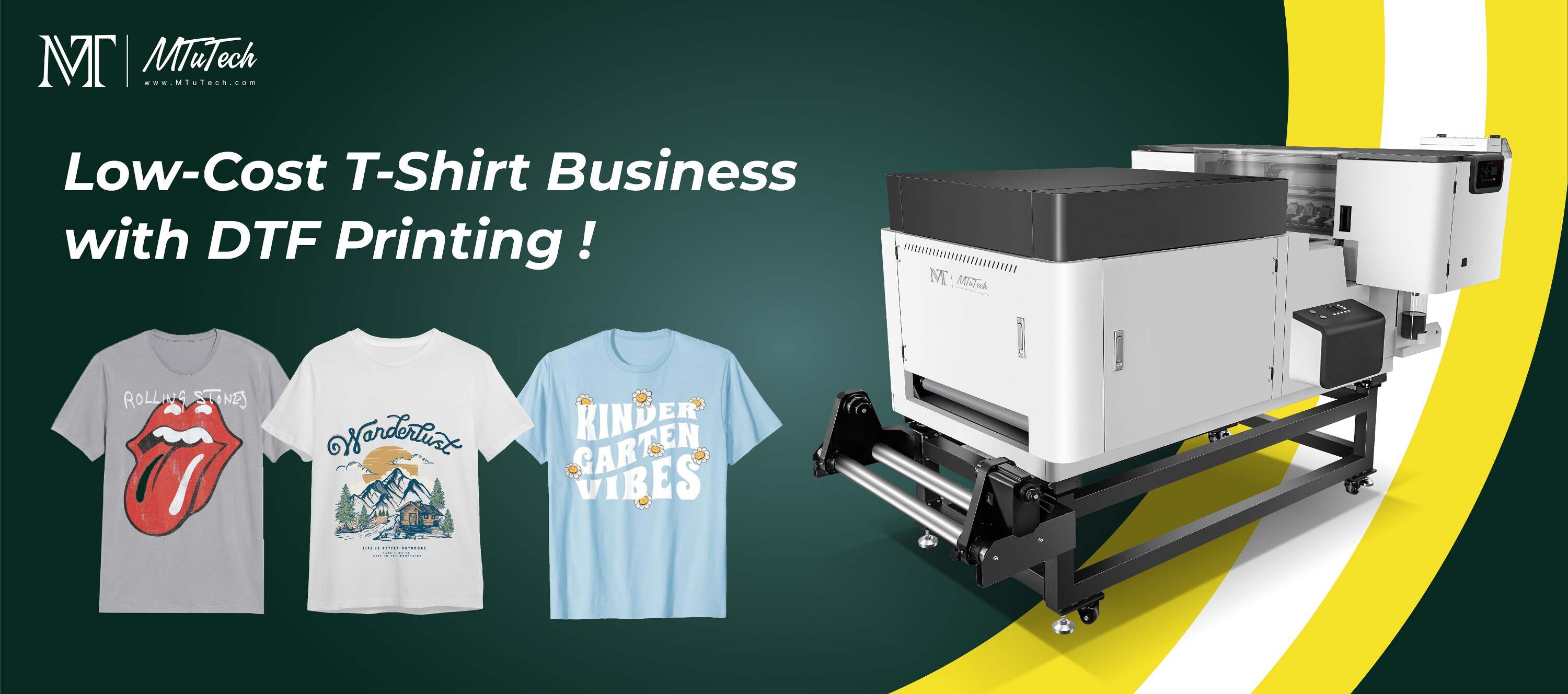Introduction
In recent years, the printing industry has undergone significant changes, with advancements in technology paving the way for innovative printing solutions. One of the most exciting developments in 2025 is the growing trend of print shops transitioning to Direct-to-Film (DTF) printers. This blog will explore the reasons behind this shift, examining the advantages DTF printers offer, the unique features that make them appealing, and how this technology is shaping the future of printing.
Understanding DTF Printing
Before diving into the reasons print shops are making this shift, it’s essential to understand what DTF printing entails. DTF printing is a process that uses specially coated films to print designs, which are then transferred onto various textiles. This method utilizes a combination of inks, adhesives, and heat to create vibrant, durable prints that stand up to washing and wear.
Benefits of DTF Printers
1. Versatility Across Different Fabrics
One of the standout advantages of DTF technology is its ability to print on a wide range of materials. From cotton and polyester to blends and more, DTF printers can handle an array of fabrics, making them ideal for businesses that aim to diversify their offerings. This flexibility allows print shops to cater to different customer needs and trends.
2. High-Quality Output
Print shops are often judged by the quality of their prints. DTF printers deliver exceptional results, producing designs with vivid colors and intricate details. The printing process ensures that colors remain vibrant and don’t fade easily, which is a significant selling point for fashion and merchandise businesses.
3. Cost-Effectiveness
Adopting DTF technology can lead to lower production costs over time. Traditional printing methods often require extensive setup and more expensive inks, while DTF printers streamline the process, reducing the time and materials needed for setup. Additionally, DTF printers are generally more efficient in terms of ink usage, providing a cost-saving advantage for print shops.
4. Quick Turnaround Times
In the fast-paced world of fashion and merchandise, customers expect quick service. DTF printers can significantly reduce the turnaround time from design to finished product. The simplicity of the DTF process minimizes delays, allowing print shops to fulfill orders faster and keep customers satisfied.
5. Eco-Friendly Production
Sustainability continues to be a growing concern in the printing industry. DTF technology has made strides toward eco-friendliness, using less water and energy compared to traditional printing. The reduction in waste materials is also a plus, making it an attractive option for environmentally conscious print shops.
Features of DTF Printers
1. User-Friendly Design
Modern DTF printers come equipped with user-friendly interfaces that make operation straightforward, even for those with minimal technical experience. This ease of use not only minimizes training time for employees but also enhances overall efficiency in the workflow.
2. Advanced Technology
Many DTF printers are equipped with advanced technology, such as automatic ink circulation and advanced color management systems. These features ensure high-quality output and reduce the risk of technical errors during the printing process.
3. Compact Footprint
Space can often be a premium for print shops, especially those in urban areas. DTF printers generally have a smaller footprint than traditional printing machines, allowing for better utilization of limited workspace while still delivering high productivity.
4. Customization Options
DTF printers provide extensive customization options, enabling print shops to offer personalized designs and unique products. This capability can attract more clients who are looking for bespoke items, thus widening the business's client base.
5. Minimal Maintenance Required
Regular maintenance can be a burden for print establishments. Fortunately, DTF printers require less maintenance than traditional printers, primarily due to their simplified mechanisms. This reduced maintenance demand allows print shops to focus more on production rather than upkeep.
Challenges and Considerations
While DTF printers offer numerous benefits, the transition isn't without its challenges. Print shops must consider the initial investment and any associated training for staff. Additionally, it's essential to choose high-quality DTF printers to avoid issues such as print quality and durability.
Conclusion
The printing landscape is continually evolving, and the move towards DTF printers in 2025 reflects a significant shift towards efficiency, quality, and sustainability. As print shops embrace this innovative technology, they not only enhance their service offerings but also position themselves as modern solutions in a competitive market. Making this switch could very well be the game-changer needed for businesses aiming to thrive in an increasingly demanding environment. If you're considering making the switch, explore our high-quality DTF printers here and see how they can elevate your printing business.
FAQ
What is the difference between DTF printing and traditional printing methods?
DTF printing involves printing designs on a special film, which is then transferred onto fabrics using heat. Traditional methods, such as screen printing, require stencils and layers of ink, making DTF more versatile and quicker for color-rich designs.
Are DTF printers suitable for bulk orders?
Yes, DTF printers can efficiently handle bulk orders thanks to their quick turnaround times and reduced setup processes. This makes them an excellent choice for businesses looking to fulfill larger contracts.
How do DTF prints hold up over time?
DTF prints are known for their durability. They maintain color vibrancy and resist fading, cracking, and peeling even after numerous washes, making them suitable for professional apparel and merchandise.
Can DTF printers be used for other applications besides textiles?
Yes, DTF printers can print on a variety of surfaces, including wood, leather, and various types of film, allowing for customization across different products beyond textiles.
What are the maintenance requirements for DTF printers?
DTF printers generally require less maintenance than traditional printers. Regular cleaning and occasional ink checks are typically sufficient to keep them running smoothly, making them more user-friendly.

